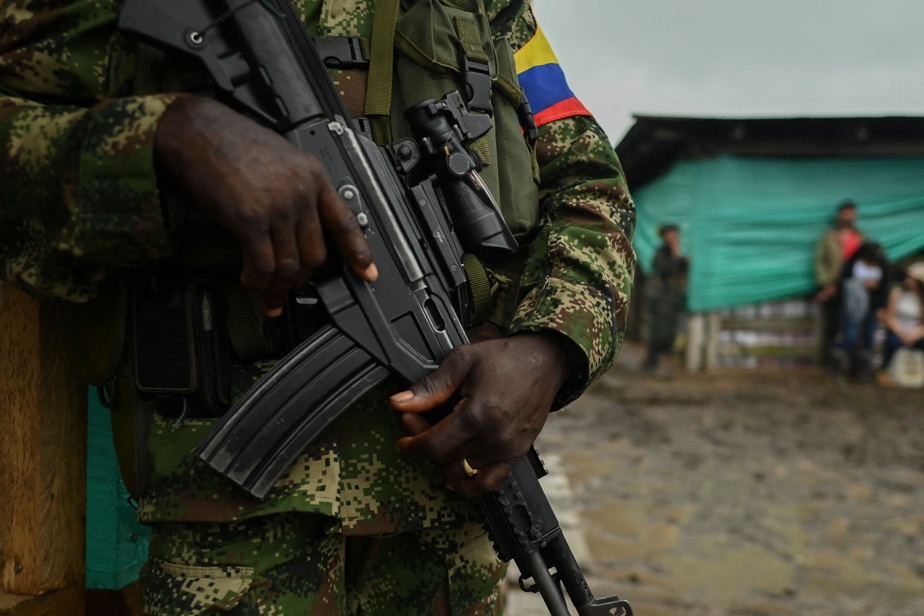(San Vicente del Caguán) Dissident former FARC guerrillas in Colombia say they are “ready” to negotiate peace with the government, but many uncertainties hang over the process of “total peace” wanted by the president Gustavo Petro.
Sunday, during a high mass in the areas of the Amazon jungle under its control, in the south of the country, “the central staff-FARC” (EMC-FARC), headed by its emblematic chief “Ivan Mordisco” – whose public appearances are rare – said he was “ready” to negotiate peace, but “with social justice”.
The vast majority of Revolutionary Armed Forces of Colombia (FARC) guerrillas — more than 13,000 men and women — laid down their arms after the 2016 peace accord. A small minority never signed it. the embryo of what is today the EMC-FARC, since joined by young recruits.
As of Sunday evening, the Colombian press displayed full-color images of the meeting with Marxist references and “revolutionary” dialectics, taking up all the attributes of the historic FARC, of which the dissidence claims to be the sole depositary.
As if stunned by the show of force, the political class remained silent on the whole, starting with the first left-wing president of the country, traveling to the United States, but usually very active on social networks.
“Rock stars”, still lambasted right-wing senator Maria Fernanda Cabal on Twitter. “Evil rules us and we must defeat it,” she said, seeing future negotiations as “the biggest trap in the history of Colombia!” »
“We reject the use of our symbols by the self-proclaimed central staff”, condemned the Comunes party, heir to the FARC, and which is alarmed for “the security” of the signatories of the 2016 agreement , of whom more than 360 have been murdered, most by dissent according to authorities.
“What will be the rules that will govern this new peace agreement and what will be the degree of compromise? […] Colombia has a long history of “failed” and “some” successful peace processes, expert Patricia Muñoz of Javeriana University told AFP.
The armed group has already demanded that the “communities”, in other words the peasant populations under its control, participate in the negotiations.
His stronghold is located in the “Llanos”, these pre-Amazonian foothills at the eastern foot of the Andes, a sparsely populated territory, but as big as Great Britain, which was for a long time one of the main areas of coca production.
The EMC-FARC has federated in recent months several other small dissidences that had arisen elsewhere in the country, extending its tentacles in Cauca (west), Catatumbo (east) or Putumayo (south).
For conflict investigator Jorge Mantilla, “the starting point of the process” is the suspension of the arrest of 19 EMC commanders “to provoke a meeting of commanders that would lead to a coordination that does not exist today. today,” according to an article on the Razon Publica website.
Another faction of the dissidence, the “Segunda Marquetalia”, a signatory to the 2016 agreement, but returned to the maquis since – and which clashes regularly with the EMC-FARC -, also seems willing to negotiate.
President Petro, himself a former guerrilla, is also negotiating with the rebels of the Guevarist ELN, and seeks a peaceful solution to the conflict with the Clan del Golfo, the most powerful cartel in the country.
“The downside is the risk of restoring political legitimacy, visibility to those who until now only appeared as a nebula of highwaymen,” said a source close to the peace negotiations.
On political discussions, “the problem will be to continue to implement the 2016 agreement, while negotiating with people who consider this same agreement as bad and who will ask for much more”, she adds.
Another challenge: if the negotiation progresses with the dissidence, other armed groups may want to take advantage of this to take control of their territories.

